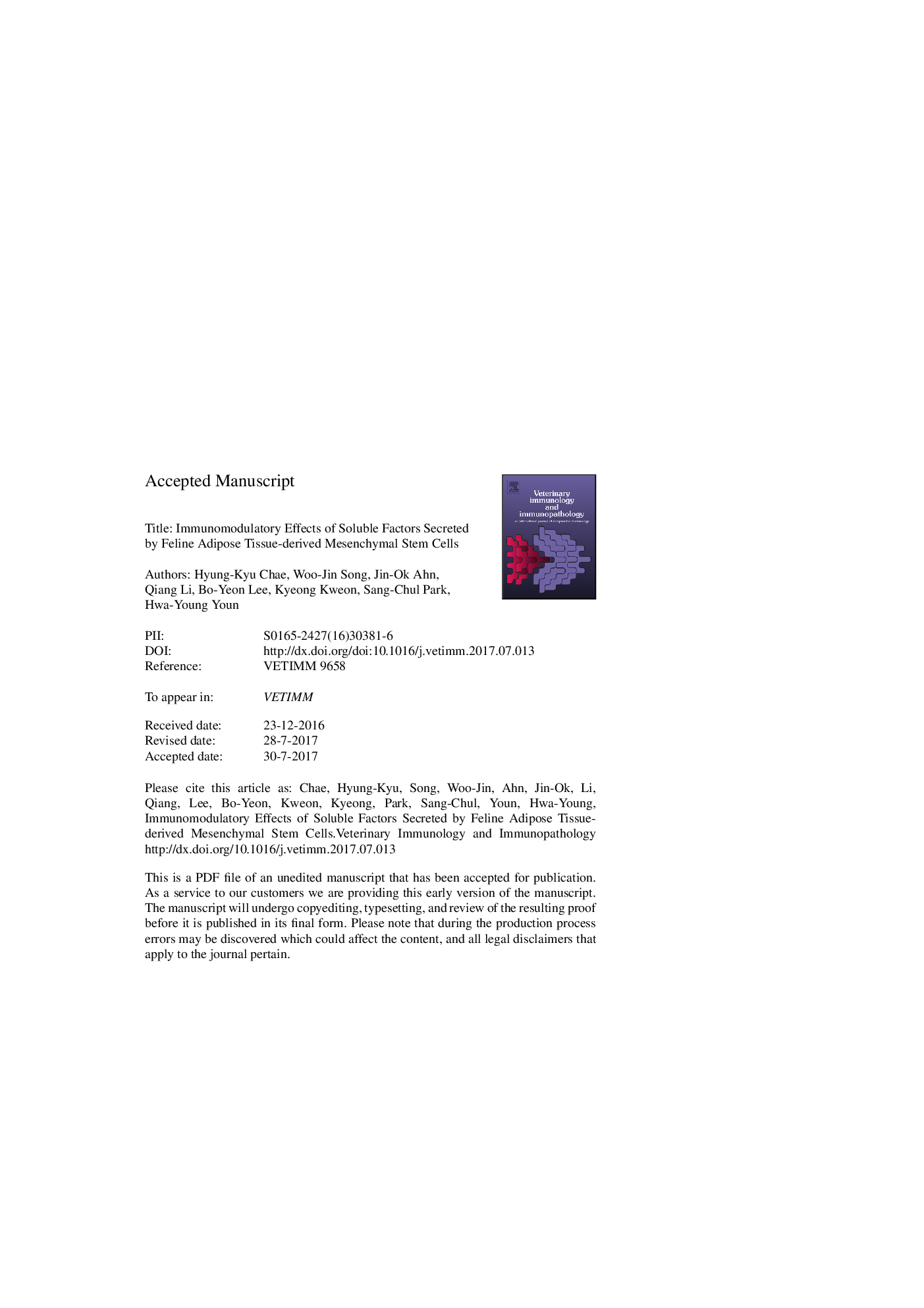| Article ID | Journal | Published Year | Pages | File Type |
|---|---|---|---|---|
| 5544790 | Veterinary Immunology and Immunopathology | 2017 | 29 Pages |
Abstract
Mesenchymal stem cells (MSCs) have immunomodulatory functions and differentiation capacity, and their clinical use is increasing in veterinary species. Although MSCs have been applied in the treatment in various inflammatory diseases, mechanistic research on feline MSCs is lacking. Accordingly, in this study, we aimed to investigate the immunomodulatory mechanisms of MSCs isolated from feline adipose tissue (fATMSCs). fATMSCs from healthy cats were cultured in an appropriate manner and cocultured with transwell-separated allogeneic feline peripheral blood mononuclear cells (fPBMCs) and RAW264.7 murine macrophages. After 48 h of coculture, RNA was extracted from RAW264.7 cells and fPBMCs. Cytokine expression in these cells was measured using quantitative real-time polymerase chain reaction (qRT-PCR) and compared according to the presence of fATMSCs. The mRNA levels of pro-inflammatory cytokines, e.g., tumor necrosis factor-α (TNF-α), inducible nitric oxide synthase, and interleukin (IL)-1β, were significantly decreased in cocultures of mitogen-stimulated RAW264.7 cells with fATMSCs compared with that in the RAW264.7 cells control group. Additionally, changes in the expression of mRNAs extracted from fPBMCs were as follows: pro-inflammatory TNF-α, interferon-γ, and IL-6 were decreased, and anti-inflammatory IL-10 was increased during coculture of mitogen-stimulated allogeneic fPBMCs with fATMSCs. We also extracted RNA and collected supernatants from fATMSCs during transwell culture for measurement of the expression and secretion of soluble factors by qRT-PCR and enzyme-linked immunosorbent assays, respectively. The mRNA expression of immunomodulatory factors from fATMSCs, including cyclooxygenase-2 (COX-2), transforming growth factor (TGF)-β, indoleamine-2,3-dioxygenase (IDO) and hepatocyte growth factor, increased in the presence of RAW264.7 cells. Similarly, TGF-β, COX-2, and IDO mRNA expression and prostaglandin E2 (PGE2) secretion from fATMSCs increased in the presence of allogeneic fPBMCs. Finally, we measured the viability of fPBMCs under various conditions. Cell viability decreased in fPBMCs suspended in fATMSC-derived conditioned medium, and this reduction was alleviated in the group supplemented with NS-398 a PGE2 inhibitor. Our data suggested that soluble factors, including PGE2, secreted by fATMSCs played an important role in the immunomodulatory effects of these cells. These findings may be helpful in the application of fATMSCs to feline patients with immune-related diseases.
Related Topics
Life Sciences
Agricultural and Biological Sciences
Animal Science and Zoology
Authors
Hyung-Kyu Chae, Woo-Jin Song, Jin-Ok Ahn, Qiang Li, Bo-Yeon Lee, Kyeong Kweon, Sang-Chul Park, Hwa-Young Youn,
